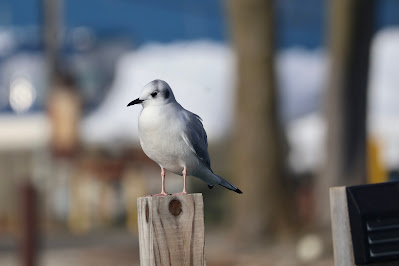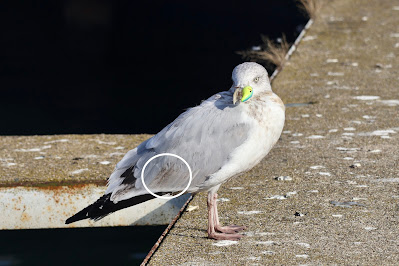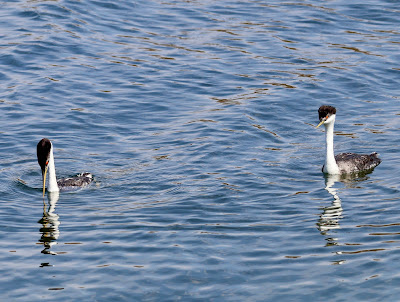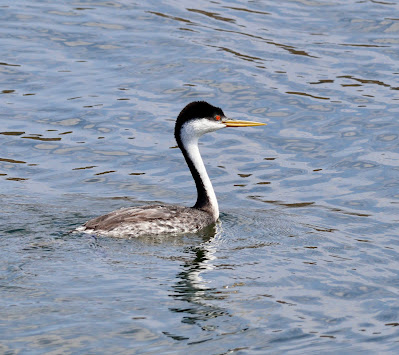I had planned to write this blog post sometime back in July. At that time I had received in the mail nine 2025 calendars, from nine different environmental organizations as swag to encourage a monetary donation. Just in the past month I have received four more 2025 calendars bringing my total for the year to thirteen calendars. There are still two months to go in 2024, but I hope I have received my last calendar.

How many non-profit charitable organizations are funded is something I have thought about for a long time. How effective can their strategies possibly be? Especially when there is so much overlap in many of the organizations. I have long directed my small bore charitable giving to birding and the environmental organizations that hew to my interests. Any donation I make will always bring a volley of new mailings from other organizations requesting money and sending swag. There is the swag that is small enough to be included in the envelope; cute greeting cards, Christmas cards, carry bags that allow us to avoid the ubiquitous single use plastic bags. Some offer swag that you select by checking a box; an umbrella, a shoulder bag, a stuffed animal are things that come immediately to mind. They are sent separately and arrive about six weeks later. This kind of swag you can also select not to receive.
When I was young and learning how to donate money for causes that I cared about, I did not understand the process of donating. It seemed that as soon as my donation left the post office, my mailbox would fill with donation requests from organizations that I had never even heard of, some related to my original donation and others completely unrelated. In those days I didn't understand that these organizations cooperated with one another and sold the names and addresses of their donors. These were pre-internet days. I think of it as snail mail data collection; and yes, this was a long time ago, but this is still how it's done.
If I make even just the smallest donation to any organization, my mailbox becomes flooded with new donation requests. Often these are from the same organization requesting more money, presumably because my first donation was not large enough. Everything is always a crisis and the crises never improve.
Birds continue to smash into lighted and reflecting windows. New suburbs continue to be built on grasslands. Pesticides continue to kill honeybees, butterflies and other insects. Invasive species continue to multiple in our waterways.
Whales continue to die tangled in fishing nets and from being struck by ships. Not only does the donation strategy seem wasteful and ineffective, the organizations seem ineffective. I wonder if organizations consider that most people might not want to receive all of this unwanted clutter, over and over again, for crises that never improve.
Back in July, I looked up the salary information of CEOs for many of these organizations. I've since lost my notes, but from memory I recall that most salaries were higher than $200,000, some much higher, and one or two even exceeded a million dollars. (Of note, one climate change organization's CEO received the astonishingly low salary of about $25,000.) So, if the CEOs are receiving this level of salary and other perks, how much money is actually being directed to the effort the organization purports to support - whether it is birds, animals, the ocean, clean air and water, habitat preservation, etc.?
About fifteen years ago I traveled to England to visit friends I had not seen in a very long time. They indulged me completely and took me to several Royal Society for the Protection of Birds (RSBP) sanctuaries and even joined me in the activity of birding and seemed to enjoy themselves, although I don't think they carried on after I returned home. We birded the RSPB sanctuaries in Norfolk and took a car trip to Wales. While in Wales we visited Skomer Island (wind direction made landing the boat unsafe to disembark) and then Ramsey Island. Both were marvelous experiences. On Ramsey Island there was a table manned by a couple of young people to encourage others to join the RSPB. (Both Skomer and Ramsey islands and others are RSPB sanctuaries.) I thought why not, and used my credit card to pay the small fee. I have been a member ever since. The annual membership includes my membership card and a card for a visitor to accompany me on a sanctuary visit, a bi-monthly journal which covers endeavors throughout the whole United Kingdom. I've never been offered swag, there are no follow-up requests to give more money and the membership fee is the fee - not a selection of choices going from low to high. Most importantly, the efforts of the RSBP seem all-inclusive. The RSPB does, for a much smaller country of course, what ten or more such organizations say they do in the United States. The RSPB is laser focused on protecting species, preserving and expanding habitat, and educating and engaging the UK citizenry.
I guess it's just the American way. Big country, big worries, muddled politics, and it all requires a separate organization to address the wide variety of problems, all of which require a lot of money from wherever they can get it. They play upon our interests and our guilt. It my case this occasionally works. It's not just environmental organizations. This seems to be how money is raised by organizations of all kinds in the United States. I've been tangled in this process of fund raising for at least the past 40 years. It must be working.
Don't get me wrong. I care deeply about the environmental issues that impact the human and non-human species who we share our planet with. I donate. But, I want my donation to count for that cause. I don't see where watered down donations are achieving their purported impact. Why not consolidate our efforts so that our money and voices are united behind collective causes and actions. Sure, there would be fewer CEOs with their personal interests making very nice salaries. But, perhaps a lights off campaign during spring and fall migrations might actually happen. Or, any of the other myriad quandaries that our disconnected organizations are trying to address might actually stand of chance of being solved, or at least improved.
I'm not sure what to do with all of these calendars. I'll probably give them away to family and friends. The irony is that many people no longer even use wall-hanging calendars. The nice photos are the main attraction. I've kept the Christmas cards I recently received and will send them to friends at the holidays. But I'm sure of one thing. All this unnecessary paper, all this clutter, all this junk! We need a better way to fund and address the issues, environmental and others, that we care about.
Addendum added on Sunday, November 3rd, 2024
Yesterday I listened to the November 2nd, 2024 episode
'The Interview": Peter Singer Wants to Shatter Your Moral Complacency. Unfortunately, the New York Times now has a paywall for all of their media. But, if I have understood this new policy correctly, you can still listen to a current episode free of charge, but will not be able to access archived episodes. (The problem with this is that
The Interview is the weekend edition of the
The Daily and their episodes are published
daily. Doesn't allow much time.)
While not directly related to the argument I am making in this blog post, there are good connections Peter Singer is making with his philosophical arguments. I am thinking here of where he speaks about making your donation(s) count. The interviewer tries to get Pete Singer with a couple of gotcha questions, but overall the interview is quite good and Pete Singer is a calm and thoughtful man. I hope you can find a way to listen or read.
Second addendum added on 02/23/2025
With the election of Donald Trump, this argument may be moot. Both he and Elon Musk, are working hard to dismantle our environmental (in alt-right lingo "woke" and liberal) organizations. Listen to Nate Swick's American Birding Podcast opening monologue from February 20, 2025,
09-08: Urban Owls and More with Christian Cooper. Nate opens this podcast with his narrative about all of the funding withdrawn from various organizations including, amongst others, the National Park Service. Grim stuff.
At the end of the monologue Nate gives an apology for needing to share this alert and ends with "That's a lot. I don't mean to hang this on you." I have emailed Nate requesting that he continue to inform his listeners with this information and, please, do not apologize.























































